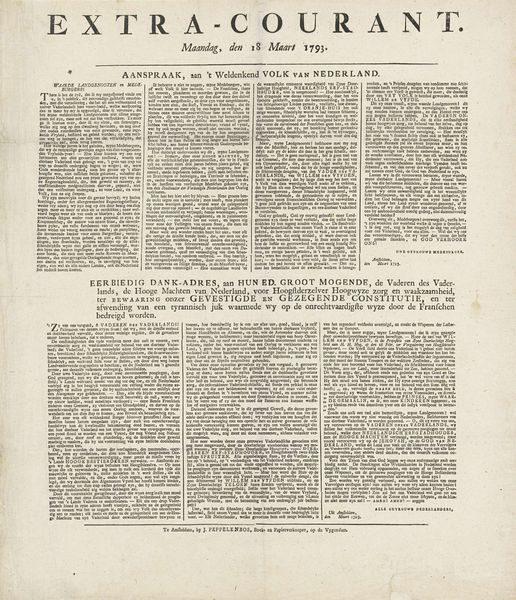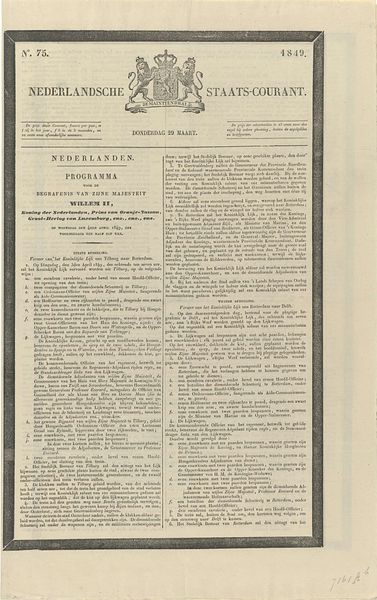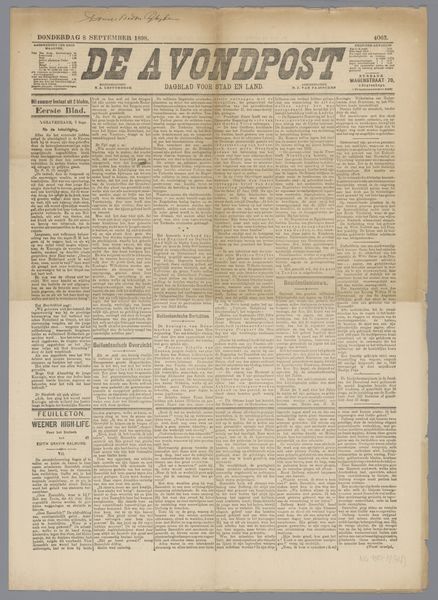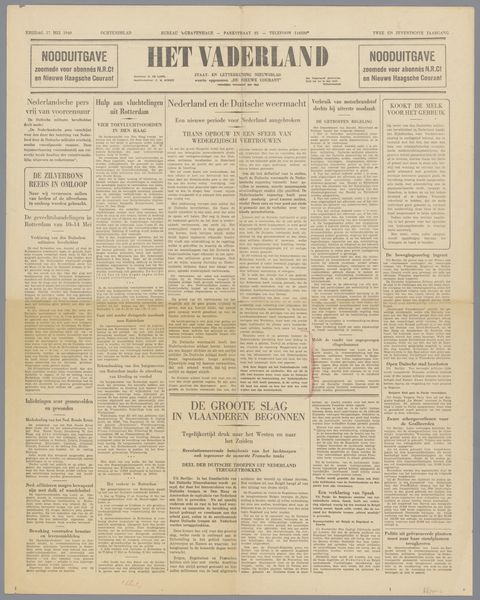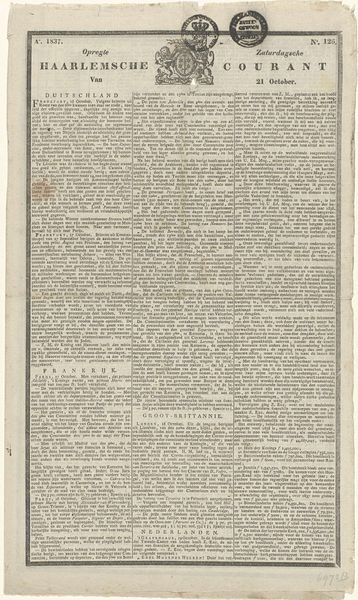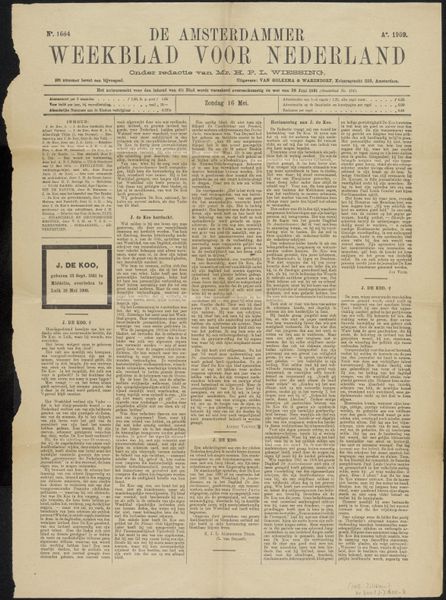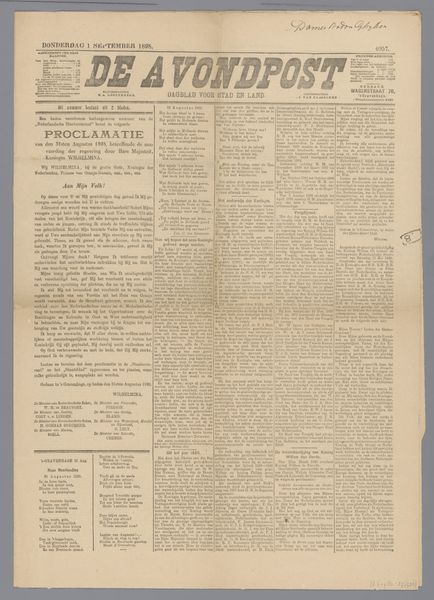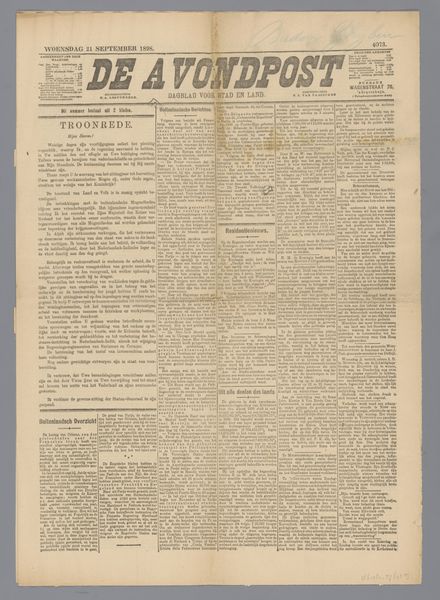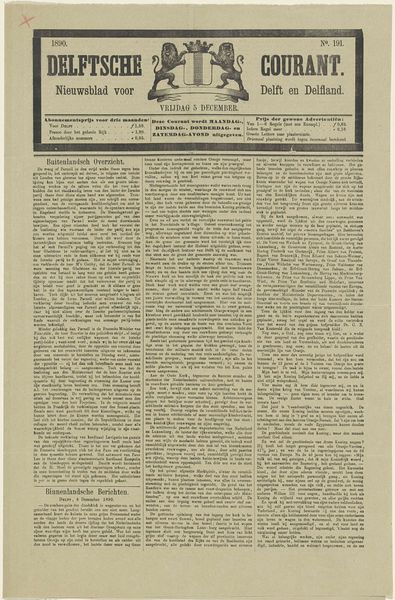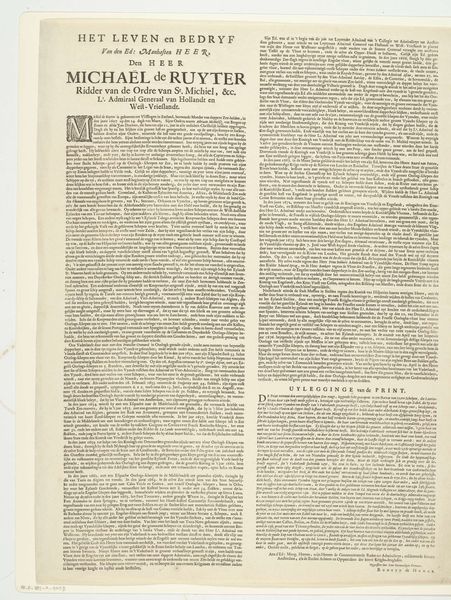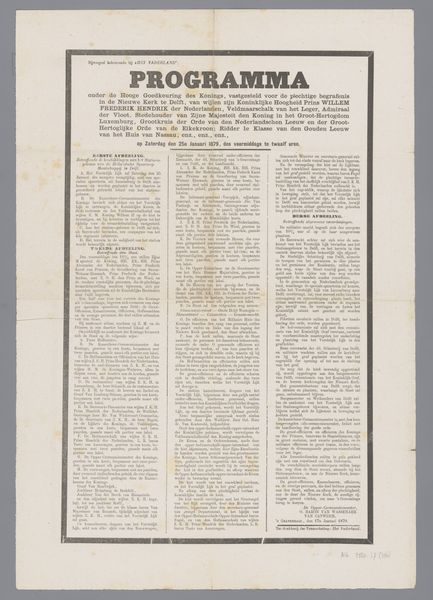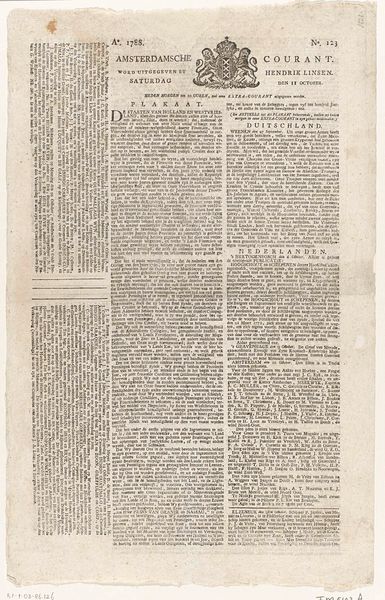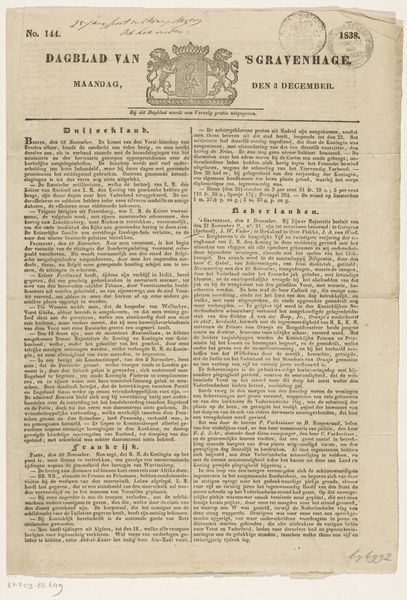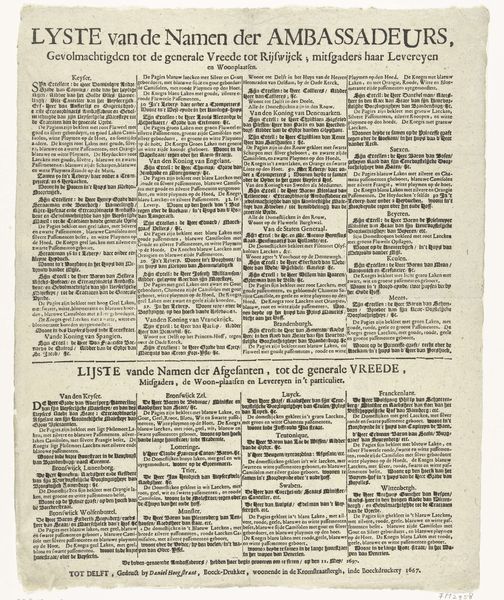
Bijvoegsel behoorende bij De Amsterdammer van 16 Nov. 1879. Twee Nieuwe Beursplannen door C. Muijsken en J.R. de Kruijff Possibly 1879
0:00
0:00
graphic-art, print, typography
#
editorial cover design
#
graphic-art
#
magazine cover layout
# print
#
typography
#
journal
#
newspaper layout
#
realism
Dimensions: height 540 mm, width 380 mm
Copyright: Rijks Museum: Open Domain
Curator: Looking at this graphic print titled "Bijvoegsel behoorende bij De Amsterdammer van 16 Nov. 1879. Twee Nieuwe Beursplannen door C. Muijsken en J.R. de Kruijff", possibly from 1879, it appears dense with information. What's your first take on it? Editor: Overwhelming, at first glance. The tight, regimented columns of text give a sense of the era's information delivery system, where quantity seemed prioritized over visual ease. It feels very much a product of its time. Curator: Indeed. As a supplement to "De Amsterdammer," it's fascinating to consider the labor involved. The typography itself, those rigid lines of text, were all set by hand. And the quality of paper suggests an understanding of distribution. The designers Muijsken and de Kruijff, how did their own economic standing possibly influence this piece? Editor: Precisely! This print, proposing new stock exchange plans, couldn’t exist without a society structured around capitalism. And who benefits from such plans? Examining it intersectionally, we see a concentration of power—white, male financiers and the journalists reporting on their pursuits. Curator: I find it remarkable how something as functional as newspaper design can still convey such specific ideologies. The format is so efficient. Look at how this conveys authority by giving importance to pure data; what it communicates outweighs readability, maybe even comprehensibility! Editor: It's a visual representation of the societal forces at play. How are marginalized voices represented in spaces dominated by the wealthy and privileged? They often are overlooked in plain sight; this image reinforces their structural absence. We can’t extract an image such as this, or it’s economic background, without that history. Curator: Your perspective highlights the publication’s intended, but also the possibly missed, audience. As a material artifact, it allows to us witness its origins. The limitations imposed by materials, such as printing lead type and thin paper, underscore the effort and resources it would have taken. Editor: Agreed. Thinking critically about the original intentions versus how it functions now in a contemporary archive sheds light on lasting power structures. What are the ethical responsibilities tied into these conversations as new ones form around finance, class, gender and accessibility today? Curator: Food for thought, indeed. The history that this single newspaper layout provides is remarkable, from its visual impact to what lies beneath. Editor: Yes, the simple artifact sparking critical insights—it highlights what we stand to gain through social inquiry into the art world.
Comments
No comments
Be the first to comment and join the conversation on the ultimate creative platform.
